The History Of The Open At Carnoustie
From home-grown favourite Tommy Armour to American legends like Hogan and Watson, the Championship Links has provided some of the game’s great champions.
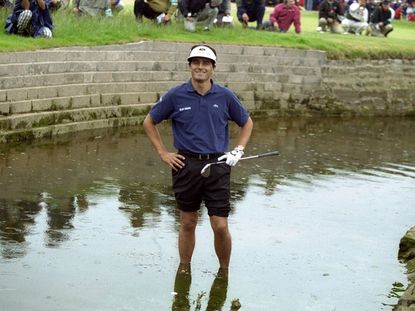

The History Of The Open At Carnoustie - Carnoustie has hosted seven Open Championships with winners including Henry Cotton, Ben Hogan, Gary Player and Tom Watson
The History Of The Open At Carnoustie
The Open takes place at Carnoustie once again this year for the eighth time and first since 2007.
The tough Angus links is often referred to as 'Carnasty' and has produced some big-name winners including Ben Hogan and Gary Player.
Here we take a journey back in time to look at what happened in those previous tournaments...
1953 - Ben Hogan
In 1949 Ben Hogan was almost killed in an horrific car crash that left him with a broken collarbone, a smashed rib, a double fracture of the pelvis and a broken ankle. Many people feared 'The Hawk' would never play golf again.
Get the top Black Friday deals right in your inbox: Sign up now!
The hottest deals and product recommendations during deals season straight to your inbox plus all the best game-changing tips, in-depth features and the latest news and insights around the game.
But Hogan confounded the sceptics by returning to top-level golf and winning six further Majors. It was fitting his only appearance in the Open came at Carnoustie because he had much in common with the course. The words tenacious, uncompromising and proud are frequently used in descriptions of both.
Aged 40, Hogan was under pressure to make the journey across the Atlantic to compete on a links. Legend has it Gene Sarazen told him he couldn't be considered a true great until he had won the Open Championship. Towards the end of his life 'The Squire' denied any coercion. "Nah, his going over there had nothing to do with me", said a 97-year-old Sarazen.
"Hogan never did anything he didn?t want to."
Whatever it was that compelled Hogan to make the journey, he came to Scotland to win. He had already claimed the Masters and the US Open that year and wanted to add the Claret Jug to his collection. He arrived in Scotland two weeks before the event to acclimatise, to practise on the links and get used to playing with the smaller British ball.
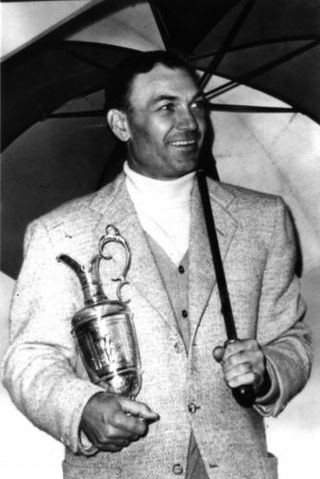
Hogan's performance at the 1953 Open highlighted the meticulous approach essential for success around the Championship Links at Carnoustie.
Arrangements were made for him to prepare at nearby Panmure. Accompanied by caddie Cecil Timms, the American methodically familiarised himself with a completely different type of golf. At one point Timms was instructed to stand on a green to gauge the reaction of the smaller ball as it landed. He was told the first 10 balls would be landing on the front-right portion of the green, the second 10 on the front-left, the next 10 on the back-right and so on. Pretty impressive when you consider Hogan was firing in 2-irons.
Hogan's approach to Carnoustie was spot on. He realised the importance of finding the narrow fairways so he practised hard to get his long game in top order. Of the notoriously punishing gorse, he later said, "I don?t know what you do if you get into it, and I never wanted to find out. I didn't practise getting out of the gorse because I figured anyone who went into it frequently wouldn't have a chance anyway."
Hogan started unspectacularly with a 73, but then improved every round with scores of 71, 70 and 68 for a total of 282, then an Open record. He won by four shots from his friend Frank Stranahan, Argentinian Antonio Cerda, Peter Thomson of Australia and Welshman Dai Rees.
Hogan had won the hearts of the British golfing public. He displayed courage and excellence to triumph around the most difficult links on the Open rota.
1931 - Tommy Armour
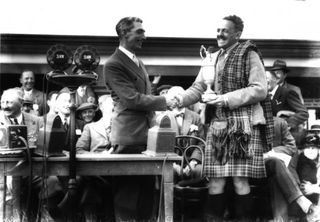
The winner of the first Open at Carnoustie in 1931 was also a popular one. Tommy Armour was born in Edinburgh in 1894. He fought in the First World War where he rose to the rank of Staff Major before losing his sight in one eye during a mustard gas attack. Although he emigrated to the US in the 1920s the home crowd still looked on him as one of their own.
'The Silver Scot', as Armour was known, entered the final round five shots off the pace but a closing 71 (then a tie for the course record) gave him a total of 296.
Argentina's Jose Jurado ended as Armour's closest challenger. He could have forced a play-off had he not fallen foul of a miscalculation on the 18th.Thinking he needed a five to tie, he laid up short of the Barry Burn with his second shot. He pitched on and two-putted for five. Upon leaving the green he was made aware he had actually needed a four to match Armour's score. It wouldn't be the last time Carnoustie's 18th would witness an error in judgement.
1937 - Henry Cotton
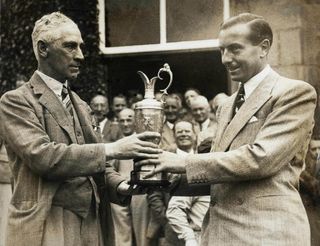
In time for the 1937 Open, local man James Wright completed a redesign of the final three holes. James Braid had reworked the course in 1926 but it was thought by many his finish wasn't stern enough and Wright's alterations have remained largely unchanged to this day.
Britain's Henry Cotton won the second of this three Open titles in 1937. Despite appalling conditions he outlasted the opposition, returning a total of 290, including a fabulous final round of 71 in pouring rain. Cotton's main worry as he sat in the clubhouse was that the final round would be abandoned due to the course becoming unplayable. The round was completed despite the deluge (just) and Cotton lifted the Claret Jug.
1968 - Gary Player
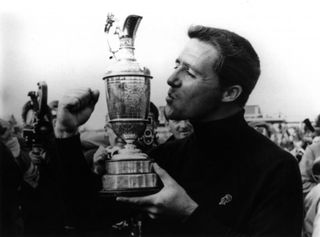
At 7,252 yards the Carnoustie course prepared for the 1968 Open was the longest in Championship history. Another first that year was the introduction of a 36-hole cut and only the top 80 and ties would be eligible to complete the final two rounds.
The first round confirmed the challenge posed by the Angus links as only four players broke par. Doug Sanders had a harder time than most. He received a Panmure rather than Carnoustie scorecard to mark at the start of his round.
As is often the case at Carnoustie, the tournament turned into an endurance test: an examination of the players' grit and determination. This suited South Africa's Gary Player, a ferocious competitor. He came out on top in an epic struggle with Jack Nicklaus, Bob Charles and Billy Casper to claim his second Open victory.
The defining moment came at the par-5 14th, Spectacles. Tied for the lead, Player reached for his 3-wood and blasted his second shot to two feet, setting up an eagle three. It was one of the greatest shots in Open history.
Expand Open Championship Golf Betting Tips 2019 – Final Round

Open Championship Golf Betting Tips 2019 – Final Round
Who is going to make you some money…
Expand Open Championship TV Coverage 2021

Open Championship TV Coverage 2021
Here we take a look at the Sky…
Expand Open Championship Prize Money 2019

Open Championship Prize Money 2019
The purse has increased $250,000 on last year
Expand The 14 Open Championship Venues

The 14 Open Championship Venues
Here we list all 14 Open Championship Venues…
1975 - Tom Watson

The 1975 Open was marked by a first and a last. Tom Watson turned up to the competition a complete links novice but, unperturbed by the alien playing surface, the 25-year-old American returned three good rounds in relatively benign weather to enter the final day just three off the pace. In worsening conditions Watson dug deep to record a level-par round and finish tied with Jack Newton on 279.
The resulting 18-hole play-off would be the Open's last. The pair were locked right up until the final hole when Newton found sand with his second. Watson made regulation par and claimed the first of his five Open titles.
1999 - Paul Lawrie
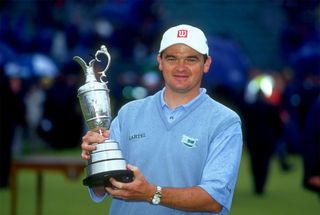
The Open visited Carnoustie once again in 1999 when the links witnessed one of the most enthralling and controversial tournaments in Open history. Treacherous rough, a winning total of +6, a play-off and a Frenchman going doolally.
Perfect growing conditions in the run-up to the Championship meant the playing surfaces were in great shape but that the rough was knee-high. The combination of this and fairways that could be crossed in three strides resulted in one of the most challenging golf tournaments ever held.
The field finished the week a combined 2,660 over par. Sergio Garcia missed the cut on +30, first-round leader Rod Pampling shot 86 in the second round to go home early, Greg Norman had an air shot and Tiger Woods shot +10 and still finished tied seventh. "Give us some room, give us a chance to play," he said.
Going into the final round, Jean Van de Velde held a five-shot lead over Craig Parry and Justin Leonard. Scotland's Paul Lawrie was seemingly out of contention 10 shots back. The Frenchman appeared to be cruising and could afford a double-bogey at the final hole to win. Cue a farce of monumental proportions.
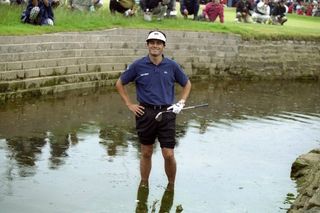
Van de Velde fired his second shot at the right-hand grandstand and it ricocheted backwards into deep rough. He then hacked it into the Barry Burn. After going in to inspect it he dropped backwards, chopped it into the greenside bunker and courageously got up and down for a seven. It dropped him back into a tie with Leonard and Lawrie who had surged up the leaderboard. The Scotsman then took control of the four-hole play-off to become the first Scottish Open winner since Sandy Lyle in 1985.
Those who have attempted to downgrade Lawrie's achievement are wide of the mark. The Scot fired an awesome 67 in the final round then birdied the last two holes of the play-off to secure a deserved victory. On a monstrously difficult golf course it was the Aberdonian who lasted the distance.
2007 - Padraig Harrington
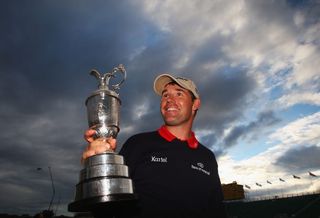
The 2007 Open at Carnoustie was almost as dramatic at the 1999 playing, with three men vying for the Claret Jug on Sunday afternoon.
Three men - Padraig Harrington, Sergio Garcia and Andres Romero - were all in the hunt and none of them had ever tasted major glory before.
Romero had made an astonishing 10 birdies on Sunday but finished double-bogey to miss out by a single stroke at -6.
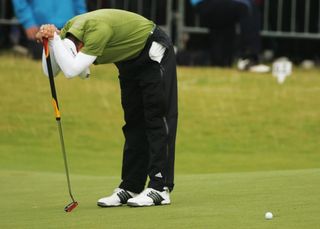
Padraig Harrington shot 67 (-4) on the final day and made a clutch double on the 72nd hole after visiting the infamous Barry Burn twice.
That left Sergio Garcia, widely considered as one of the best players to never win a major, with a one stroke lead coming down 18, although he would lip out for the Championship after failing to get up and down from the greenside bunker.
The Irishman defeated the Spaniard in the playoff to win his first of three majors and leave Garcia in despair.

Fergus is Golf Monthly's resident expert on the history of the game and has written extensively on that subject. He has also worked with Golf Monthly to produce a podcast series. Called 18 Majors: The Golf History Show it offers new and in-depth perspectives on some of the most important moments in golf's long history. You can find all the details about it here.
He is a golf obsessive and 1-handicapper. Growing up in the North East of Scotland, golf runs through his veins and his passion for the sport was bolstered during his time at St Andrews university studying history. He went on to earn a post graduate diploma from the London School of Journalism. Fergus has worked for Golf Monthly since 2004 and has written two books on the game; "Great Golf Debates" together with Jezz Ellwood of Golf Monthly and the history section of "The Ultimate Golf Book" together with Neil Tappin , also of Golf Monthly.
Fergus once shanked a ball from just over Granny Clark's Wynd on the 18th of the Old Course that struck the St Andrews Golf Club and rebounded into the Valley of Sin, from where he saved par. Who says there's no golfing god?
-
 Graham DeLaet Facts: 20 Things To Know About The PGA Tour Pro Turned Broadcaster
Graham DeLaet Facts: 20 Things To Know About The PGA Tour Pro Turned BroadcasterGraham DeLaet had a successful career in the game, but after injuries took a toll, he has stepped into a broadcasting role in recent years - here are 20 facts about him
By Mike Hall Published
-
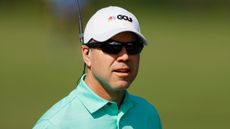 Arron Oberholser Facts: 15 Things To Know About The PGA Tour-Winning Golf Channel Broadcaster
Arron Oberholser Facts: 15 Things To Know About The PGA Tour-Winning Golf Channel BroadcasterArron Oberholser left his PGA Tour career behind to take up life as a Golf Channel broadcaster in 2013 – here are 15 things to know about him
By Mike Hall Published